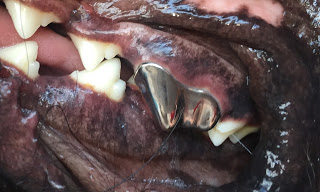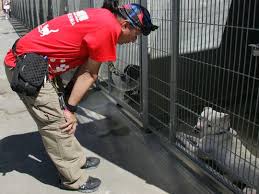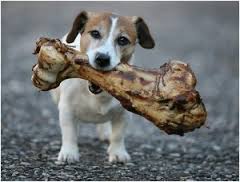Nicole Sullivan Guests
 America's Favorite Dog Walker, actress & comedian Nicole Sullivan (King of Queens - MadTV) is our guest this week and she wants you to know her sleeping arrangements.
America's Favorite Dog Walker, actress & comedian Nicole Sullivan (King of Queens - MadTV) is our guest this week and she wants you to know her sleeping arrangements.
Nicole Sullivan has always been a huge animal lover and a huge proponent of rescuing animals. Nicole has 5 rescues at home, which includes 3 dogs (Funsies, Donut, and Herman) and 2 cats (Maddie and Smush).
When it comes to sleeping arrangements, she admits that after her husband and all of his pillows, she is left with a third of the bed that she shares with one of her dogs and one of her cats that weighs 21 pounds and sometimes even a kid. Nicole states her husband doesn’t get jealous of the animals, but that his patience level is lower.
Nicole states she spoils all of her pets, but she especially spoiled her 21-year-old cat. Nicole had to pick her up about 30 times a day to let her get a few bites of food in. The things we do for our pets!
Creating a Foster Revolution
Betsy Saul, 911 Foster Pets
 The mastermind behind the world's largest pet adoption website, Petfinder, worked to change the way unadoptable animals find homes. Betsy Saul started the website 911FosterPets.com to unite transitional pets with foster parents.
The mastermind behind the world's largest pet adoption website, Petfinder, worked to change the way unadoptable animals find homes. Betsy Saul started the website 911FosterPets.com to unite transitional pets with foster parents.
Betsy Saul was the founder of Petfinder.com, the foremost pet adoption website that has ever been. However, even after over 25 million adoptions, millions of dollars of support to shelters through the Petfinder Foundation, and millions of trained pets, something still wasn't right to her and that was the millions of pets that never even get a chance to find a home.
These are the pets that never made it to adoption row. This might because they were newborns or because they were old, or they just might have needed a little extra time before they were transported to another facility.
After stepping aside from Petfinder and a few years of not working, Betsy was still waking up at night thinking about these animals that were being left behind.
This led Betsy to tackle the next problem so she created 911FosterPets. The mission of 911fosterpets.com is simple: Create a foster revolution to give these pets the extra time they need so they can live.
Betsy explained that there are about as many animals that are kept in back rooms at shelters, away from the public, as there are animals in public view. These are the animals that are waiting and only about 25-percent of them will make it up to adoption row. This made Betsy feel sick, as there were so many animals that wouldn't even have a chance of finding a home. The ones that do make are based on timing or perhaps just luck.
The animals at 911FosterPets fall into two groups. One group is of animals that are under 8 weeks of age, who have no business being in a shelter and need to get out. This is urgent, as these animals need socialization. The second group of pets are ones that are waiting to be transported to other locations. There has been such a good job done with networking and partnerships between foster groups and shelters, that there are animals that just need time to be transported to new locations.
The timing is everything. For example, there may be an animal in Dallas who someone is willing to foster in Missouri. However, it may take a week or so to arrange the transport, but the animal's time is up at the shelter. This would mean that a short foster would be needed.
There are so many people, and even those who aren't in animal welfare, who would be okay with fostering an animal for a week or so. Think also of graduate students who would long to have a pet but can't commit.
 How to help:
How to help:
Make A Difference
Many rescue groups are able to find loving forever homes for these pets, they simply need a little time, anywhere from one day to a few weeks or months - you decide! See, some of these animals just need a foster family for a day or two while transportation is being set up to get them to their rescue partners. Others may be looking for a foster family to care for an animal until their forever family is found. That's where you come in.
Can I Crash At Your Pad?
By becoming a foster family you will be saving lives - period!! And what is more rewarding than that. Sign up now and let one of these furry friends crash at your place.
Chew On It
If you aren't able to help now, no worries - It takes some of us time to decide to put on the cape. Simply give us your email and zip code and we'll send you updates when new pets are posted in your area.
Spread The Word
To really make change, we need to let everyone know - so please, spread the word via Facebook, Twitter, etc. The more people that learn about this cause, the more animals we will save - and every one matters!!
 Register Your Organization
Register Your Organization
Your organization can post pets that are urgent due to lack of time or space on 911fosterpets.com.
The site is easy to use. Animal shelters post pets that are urgent (typically meaning they will be destroyed in 72 hours or less) and potential foster families view them. Foster families can search the urgent pets in their community with various search criteria, including length of time they can foster a pet - starting with less than one week. Once a foster family sees a pet they would like to help, they simply click the foster button to be connected with the shelter where the pet is currently housed. Individuals can also sign up at 911FosterPets.com to be notified when new urgent pets in their community are posted.
Then, of course, there are the "foster failures." These are people that foster an animal and end up falling in love with them and keep them forever. Betsy states that she doesn't mind the idea of these kinds of people!
Fostering is also a good way to, "Try pets on for size," according to Betsy. She states that so many times people adopt a pet and end up returning them to the shelter because it was the wrong fit for their family. This way you can have time to see if this is the animal for you.
Visit Website
Will Your Dog's Chew Bone Injure Her Teeth? - Dr. Debbie
 Even veterinarians can make bad choices when it comes to their pet's health. I learned this when I discovered my dog, Nikki, had a broken tooth. The cause was a chew item I thought was a safe option for her to gnaw on. But I was wrong - no chew item is risk free. Sadly my Nikki had to crack three teeth for me to learn that lesson.
Even veterinarians can make bad choices when it comes to their pet's health. I learned this when I discovered my dog, Nikki, had a broken tooth. The cause was a chew item I thought was a safe option for her to gnaw on. But I was wrong - no chew item is risk free. Sadly my Nikki had to crack three teeth for me to learn that lesson.
Oh yes, it was three broken teeth! But more on that later...
Considering Chew Options
What chew options are there? As the owner of a large powerful chewer I considered the possibilities for my dog. She has a sensitive stomach and cannot tolerate edible bones or preserved rawhide products. Thank goodness, because feeding my dog pig snouts or pizzles just makes me want to gag. I'm not a fan of real bones - too many patients with broken teeth, gastrointestinal blockages and even one with a bone shard migrating through the side of a dog's throat. Soft plastic toys don't survive the first two minutes with her, and plush toys quickly lose eyes, limbs and squeakers with her near surgical precision. So I chose to offer synthetic Nylabone style bones to deal with her chewing drive. Nikki loves the flavors and happily chews away for long periods of time. When the bone looks damaged, I throw it away. It seemed like the perfect solution for a vigorous chewer.
Discovering Her Broken Tooth
While brushing Nikki's teeth, I noted a fracture of her upper fourth premolar tooth. This is the largest cheek tooth on a dog or cat's upper jaw, which serves to chew and grind food. The outer layer of the tooth was sheared off, just like a shelf of ice cracking off an iceberg. This type of fracture is common from dogs chewing on an object harder than tooth enamel. Common culprits for this type of tooth damage include antler chews, Nylabones, real bones or ice.
What to Do With Broken Teeth?
Not all tooth fractures are created equal. An uncomplicated tooth fracture is one in which only the enamel is broken. The tooth is vulnerable to further injury but is not immediately causing the pet pain. A complicated fracture is one in which the break extends beyond the enamel into the pulp chamber.
The pulp of a tooth is the inner layer where the nerve and blood supply runs. Exposure of the pulp not only causes pain, but serves as direct pathway for oral bacteria to cause a tooth abscess or spread through the bloodstream.
How to Treat a Tooth Fracture?
A complicated tooth fracture requires either a root canal or surgical extraction. Leaving a complicated tooth fracture untreated is NOT an option. These teeth hurt and shouldn't be ignored. Pets won't whine or cry out in pain with broken teeth, but rather suffer in silence. But after a diseased tooth is addressed, owners commonly note their pet's overall activity and attitude improve.
 The preferred treatment for a complicated tooth fractures is a root canal. During a root canal the contents of the pulp are removed, filled in, and the tooth is sealed. After the root canal therapy the tooth is still functional for normal chewing activities.
The preferred treatment for a complicated tooth fractures is a root canal. During a root canal the contents of the pulp are removed, filled in, and the tooth is sealed. After the root canal therapy the tooth is still functional for normal chewing activities.
If a root canal cannot be pursued, then the tooth should be surgically extracted. This removes the source of pain and potential infection. However, surgical removal of broken teeth may affect the pet's ability to chew on that side in the future.
Uncomplicated tooth fractures aren't treated as above, but rather may need outward support of the area with bonding restoration.
My Dog's Dentist Visit
Dental cleanings and extractions are a daily service at most veterinary practices, but root canals and tooth restorations aren't commonly available at general practices. I knew I could pull Nikki's tooth, but to save this tooth in my young dog, I'd need to see a veterinary dental specialist.
Nikki and I arrived at Arizona Veterinary Dental Specialists where she was evaluated by Dr. Chris Visor who determined that she had an uncomplicated fracture of her premolar and small uncomplicated breaks on two molars.
Her premolar fracture was limited to the enamel, luckily sparing pulp damage, which means she wasn't in pain. But the damaged tooth would be at risk for further injury, so she was fitted for a restoration with a metallic crown (porcelain isn't durable in pets so it's not commonly used). The two other broken teeth had minor damage, so the rough edges were drilled smooth and the tooth surface bonded.
Lesson Learned
After her crown placement, Nikki can't chew on hard chew bones like before. If she did, it could risk damage to her crown as well as her other teeth. Veterinary dentists warn dog owners to try this test of your dog's chew item - if you whack your knee with your dog's chew item and it hurts you, it'll likely break her teeth.
Now I can only imagine scores of dog owners going to their doctors with knee pain….
Take Away Tips: Can You Detect Your Pet's Broken Tooth? Most broken teeth are detected during a physical exam by your veterinarian, but some observant pet owners may discover clues to their pet's broken tooth.
1. No complaining. Don't expect your pet to cry or whine. People complain loudly when a tooth hurts, but pets just don't verbalize dental pain.
2. Uneven tartar accumulation. Due to tooth pain, the pet chews on one side more, the "good side." Tartar builds up more on the "bad side."
3. Dark spot on tooth. Enamel is evenly white, but darker or grey spots could indicate exposed pulp or dentin at the site of a fracture.
4. Draining wound present below the eye. A broken upper premolar or molar with an infected root can cause a draining wound under the eye.
If you notice any of these signs, get your dog to a veterinarian right away.
Featured veterinarian known as "Dr. Debbie" on national pet radio program, Animal Radio. Ebook author of "Yorkshire Terriers: How to Be Your Dog's Best Friend"; "Pugs: How to Be Your Dog's Best Friend"; "Mini Schnauzers: How to Be Your Dog's Best Friend"; and "Shih Tzu: How to Be Your Dog's Best Friend." Dr. Debbie's books.
Visit Website
5 Falls Seasonal Dangers For Pets
Robert Semrow, Animal Radio Listomania
 Fall is such a great time of the year. The leaves change colors, the weather gets cooler and families come together to back in the warmth of family time. Fall also brings with several dangers to our pets that you need to know and prepare for.
Fall is such a great time of the year. The leaves change colors, the weather gets cooler and families come together to back in the warmth of family time. Fall also brings with several dangers to our pets that you need to know and prepare for.
Let's begin with the household fall routines that many switch over to. Let's start with pools. It's always important to train your dog to avoid the pool without supervision. In the fall, when many folks cover their pool to avoid the leaves and other fall weather changes, it can be even more important. The pool cover looks like any other area to run and play on which is extremely dangerous.
Additionally, now is the time to make preparations to keep those doghouses up off the ground to avoid cold and wet weather. If your doghouse is flat with the ground, water and even snow can get in and cause all kinds of health issues for your dogs. Most importantly, make sure you have prepared a proper shelter and place to get out of the elements for your pets that do go outside during the fall and winter.
Remember, as you place poisons, traps and other critter catchers out to protect your home and property for the fall, please remember to keep your pets in mind. If they are going to be able to get in that area, you must supervise them at all times. And if you are going to engage in pest control, do your best to find pet safe offerings that give you and your pet an extra layer of safety.
 Next are allergens, which is pretty much on any pet dangers list regardless of the time of year. Each season has its heightened allergens and things that can exacerbate your pet's allergies. Make sure to keep them wiped down and that includes specifically their paws. With the moisture and dampness, it is much easier for potential problem allergens to get in between their paws. So, pay special attention to their paws and if you see them obsessively grooming their paws, be quick to see if there is something causing that.
Next are allergens, which is pretty much on any pet dangers list regardless of the time of year. Each season has its heightened allergens and things that can exacerbate your pet's allergies. Make sure to keep them wiped down and that includes specifically their paws. With the moisture and dampness, it is much easier for potential problem allergens to get in between their paws. So, pay special attention to their paws and if you see them obsessively grooming their paws, be quick to see if there is something causing that.
Fleas and ticks are another problem that increases in the fall. Ticks because there are fewer potential opportunities for ticks in the fall and they hone in on those who are still venturing out. Fleas, because they breed in the spring and are in full swing as fall arrives.
I'll finish up with another, every season list includes this, and for good reason. That would be Seasonal Food items. That's right, your pet doesn't know which foods are dangerous and which foods are safe. Unfortunately, the same often goes for your guests at get-togethers, so be vigilant about what your pets can get into and what your guests may be sharing with your pets. Know if any of the food you are serving can be poisonous to your pet.
The fall is a wonderful time to spend with your pets. Share your fall pet preparations on our Animal Radio Facebook Page.
Visit Website
Animal Radio News - Lori Brooks
 Electronic Containment for Cats
Electronic Containment for Cats
A study by animal welfare specialists showed that using electronic containment systems to restrict where pet cats venture did not result in long-term wellbeing problems, while the use of hand-held shock collars on dogs had previously led to concerns over the welfare of pets trained using so-called 'e-collars.' However, other forms of electronic training devices for pets have not received much attention from researchers. These included invisible or virtual fences, which deliver a static electric pulse to deter an animal from crossing a boundary like the edge of someone’s property or a back yard. A study into these systems by animal welfare researchers at the University of Lincoln in the United Kingdom found no evidence of long-term problems in cats living with these underground fences, compared to cats being able to roam freely in and out of their owners' yards. While some people argued that electronic containment systems could never be justified for pets, other studies found that hundreds of thousands of cats were killed and injured on roads each year. These devices can prevent these often-fatal injuries and the emotional cost to the cats and their owners. Consider this, unlike owner-operated hand-held electronic training devices; invisible fences depend purely on the cat's behavior for any correction and not human judgment. Modern devices train the cats to associate a warning beep with the location of the invisible fence. As a consequence, animals may be able to quickly and efficiently learn appropriate avoidance behaviors, without anxiety or fear of a shock.
 Man Builds Shelter For Nuclear Disaster Pets
Man Builds Shelter For Nuclear Disaster Pets
Shortly after the Fukushima nuclear disaster in Japan many years ago, residents who lived near the plant were immediately evacuated because of the risk of radiation exposure. But did you know they were forced to leave their animals behind? That’s because residents were assured they’d be back at home in a day or so, so they left their pets. They had no choice. Fortunately a man named Akira Honda, nicknamed Taicho, raced to the disaster area to help. He immediately realized the great need for an animal shelter near the radiation-contaminated exclusion zone. Just a month after the disaster, Taicho established the Nyander Guard Animal Rescue about 25 miles away from the disabled nuclear site. Obviously all the dogs and cats had been exposed to radiation. But unless you had a really high amount of radiation in a pretty short amount of time, it really does not affect them until about 30 years later and they don’t live that long. So saving all the animals was absolutely the right thing to do. At the rescue shelter, cats were able to roam in cat rooms, while bigger dogs had spacious kennels and smaller dogs were kept indoors. The dogs were walked twice a day and sometimes taken on trips to parks. Although many years have passed since the disaster, the shelter still rescues and feeds abandoned animals in the restricted and abandoned areas.
 120-Pound Pet Rodent
120-Pound Pet Rodent
The word rodent implies ugly unwanted, little creatures that sneak into your home and freak out a lot of us. Many rodents are typically met by the lethal snap or stickiness of traps, but that is not always the case. There was a 120-pound rodent in Texarkana that was genuinely loved, hugged and even given home-cooked meals. His name was Chico and he was a Capybara, a species National Geographic says is, "The World's Largest Living Rodent." Only about a dozen or fewer Capybaras are kept as pets in the United States and they require specialized veterinary care. Luckily for Chico, he was part of Texas A&M's research team, which keeps records of his dimensions and health. The semi-aquatic critters are natives of South American places like Argentina, Brazil, Bolivia and Ecuador. His owner got Chico when he was just 10 days old and weighed about 4 pounds. Chico ended up weighing over 120 pounds and his owner said, "He looked like a gerbil on steroids," Despite his size, he was afraid of his fur sibling Chihuahua.
How To Encourage Your Fat Cat To Exercise
Just as with people, feline obesity is most often linked to excessive food intake or not enough physical activity. And, just cutting back on calories alone usually is not enough. There also needs to be exercise involved in the weight loss program. So how do you encourage your cat to get more exercise? Researchers from the University of Illinois were interested in finding a method to maintain healthy body weight in cats, so they investigated the theory that smaller, more frequent meals could help to increase overall physical activity. Animal sciences researchers found that both increasing the frequency of meals fed per day, as well as offering meals that had added water (neither method involved decreasing the overall amount of daily food intake) did indeed promote more physical activity among the cats in the study. The secret they discovered is the cats were much more active during times when they anticipated being fed, especially those cats who were being fed four meals per day as opposed to those given meals at random times. "If they know they are going to get fed, that's when they are really active, if they can anticipate it.” Also, rotating between dry kibble meals and wet or canned food could also help in maintaining body weight. Experts recognize that the lifestyle of pet owners may not allow for multiple feedings per day, but if they can even go from offering only one meal per day to two, it could possibly promote more physical activity, meaning more weight loss.
 Don't Give Your Dog a Bone
Don't Give Your Dog a Bone
Vets are warning people not to give their dog a bone because it could kill them.
In fact, vets in the United Kingdom put out their warning after seeing dozens of dogs suffering from damage to their digestive tracts and blockages caused by bone splinters or larger pieces of bone that broke off in a chewing frenzy. And, if you’re thinking that only applies to cooked bones, which break and splinter much easier, that is not always the case. Britain’s leading veterinary charity says, “Surgery is usually needed to remove any blockage and in some cases, the damage caused by bones is so serious that it can be fatal.” The same is true for rawhide if a dog swallows a large piece of it, as it can become stuck and cause a blockage. Remember rawhide is not digestible. One pet food company has even stopped selling natural and raw bones following a number of fatalities, including the death of a two-year-old Miniature Schnauzer who ingested a ham knucklebone. The bone was a Christmas gift, which became lodged in his stomach. An X-ray showed fragments of bone in his stomach and intestines and despite a four-hour operation it did not have a happy ending. You should also dispose of any bones left over from a meal safely and securely to avoid pets seeking them out again, perhaps out of a trash can. And, “If owners feed their dog raw bones, we recommend speaking to their veterinary surgeon to understand the risks.” You should also never give a dog rawhide. The group also does not recommend feeding cats raw bones.
 $500 Goldfish Surgery
$500 Goldfish Surgery
Sometimes people buy goldfish for pets thinking they are inexpensive and they won’t have extreme health issues or veterinary costs. Then there is Conquer, Brisbane, Australia’s $500 goldfish, as he was known around town, because that’s about what it cost to save the $12 fish’s life. Conquer swallowed a large pebble off the bottom of his aquarium while scooping up a snack. His owner then had to rush the one-year-old fish to a vet for exotic animals because Conquer began to choke on the pebble. He first had to be anesthetized, which they did by dripping a sedative into the water until he dozed off, allowing the veterinarians to remove the stone. You can imagine how scary it must have been. The pebble was about 1/3rd of an inch wide and little Conquer isn’t even two inches long. The pebble was too big for him to spit back out. Anyway, the life saving procedure to remove the stone was successful and Conquer was soon back to normal. His owner said she had to do something, or her little finned buddy would have starved to death.
 Listen to the entire Podcast of this show (#1192)
Listen to the entire Podcast of this show (#1192)





